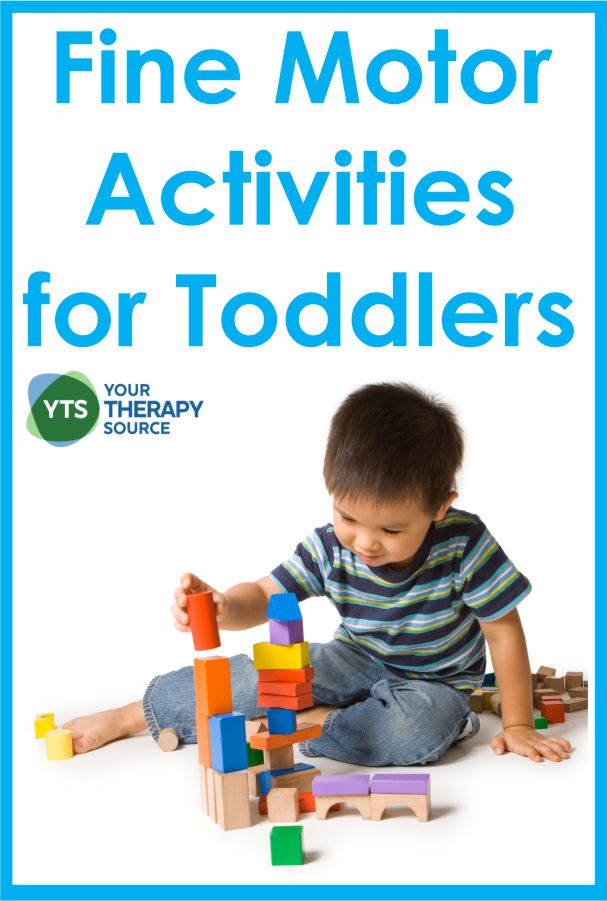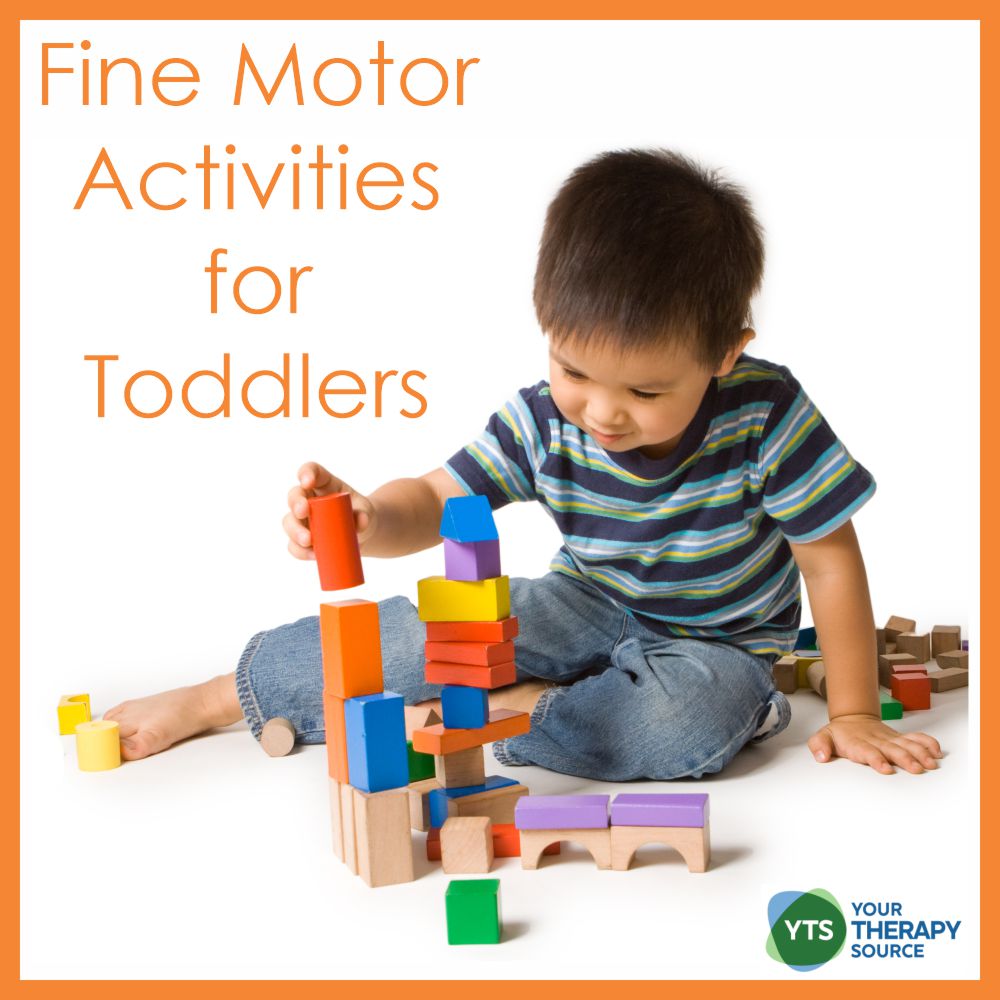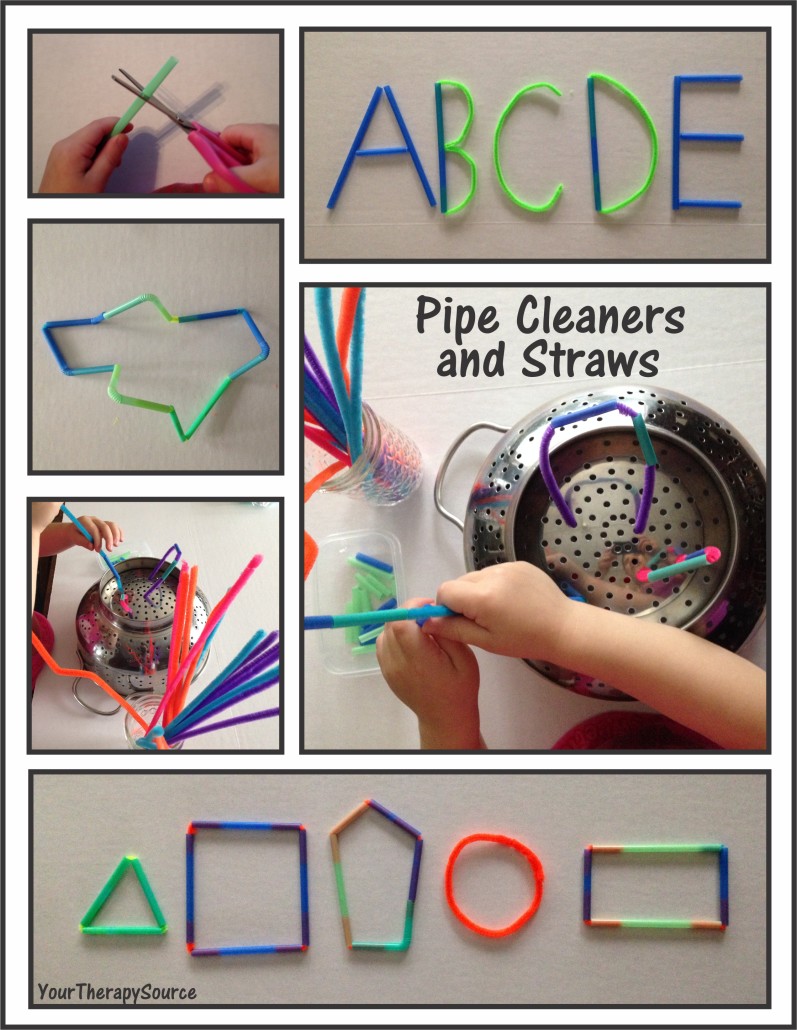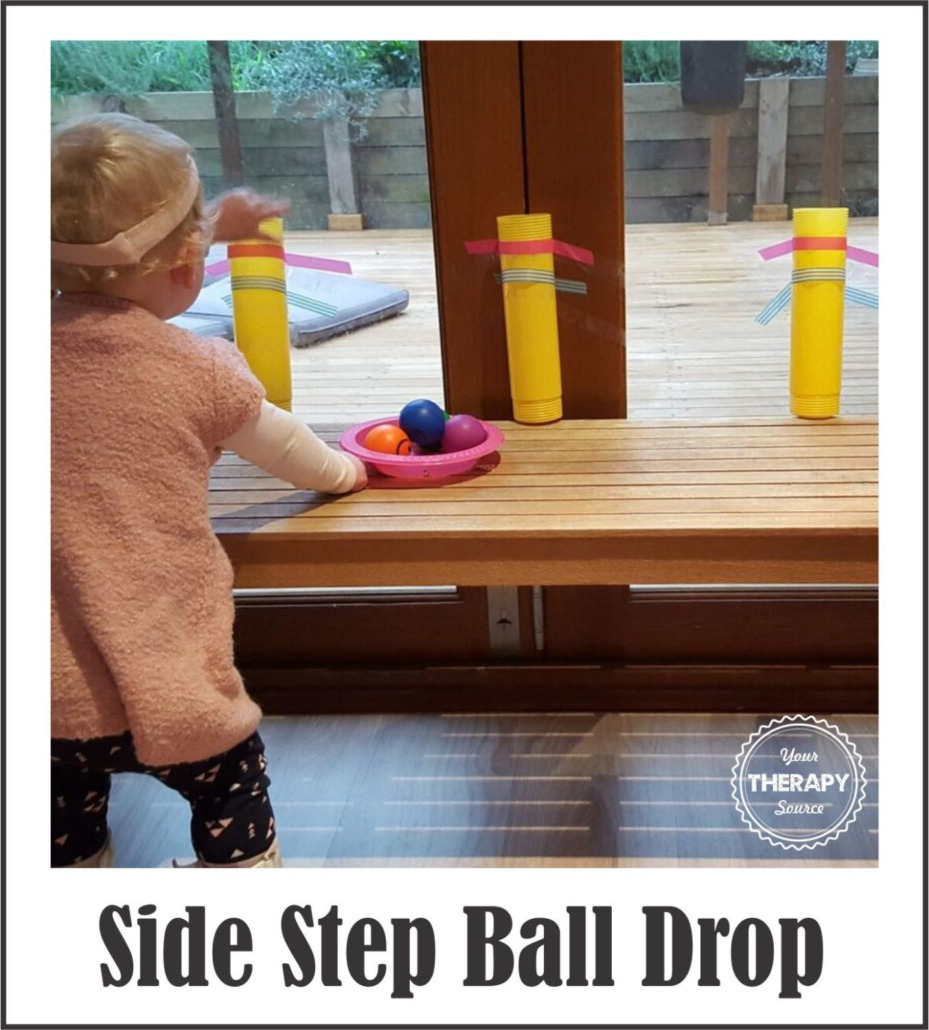FINE MOTOR ACTIVITIES FOR TODDLERS

Toddlers learn through play and parents and teachers both play an important role in providing successful opportunities in fine motor activities. Toddlers use their small hand muscles and small muscles of the fingers to reach and grasp objects. They also use them to draw and color simple shapes and lines and feed themselves with a fork or a spoon. Participating in fine motor activities for toddlers is an important part of their development and should be encouraged from an early age.
WHAT ARE EXAMPLES OF FINE MOTOR ACTIVITIES AND WHY ARE THEY IMPORTANT FOR TODDLERS?
Kids can improve their hand-eye coordination (using their eyes to help guide an activity with their hands) and increase important communication skills when engaging in fine motor activities. One simple tip is to organize fine motor activities in bins allowing toddlers to choose their activities since their favorite word is “no” at this age. Coloring and drawing simple shapes, cutting and snipping paper or playdoh, and feeding and dressing plush toys during playtime are examples of good fine motor activities for toddlers.
HOW CAN A TODDLER IMPROVE THEIR FINE MOTOR SKILLS
Toddlers can improve their fine motor skills with practice and more practice! Engaging and participating in everyday fine motor practice at home can help a toddler develop the fine motor skills they need for success in preschool. Using chalk, crayons, markers, and colored pencils begins the development of emergent writing skills, and introducing play or safety scissors to use on different materials begins the development of cutting skills. Lastly, playing dress-up allows a toddler to become more independent with fasteners (i.e. buttons, snaps) and self-care skills (i.e. feeding, dressing, toileting, and brushing teeth) throughout the day.

Dressing Skills
FINE MOTOR ACTIVITIES FOR 1 YEAR OLD
One-year-olds begin to start to want to do a few things on their own. They begin to scribble spontaneously when given a crayon, stack a two-block tower and drink from a cup independently. Especially at this age, watch your little ones during these activities very closely so they do not put anything in their mouth that could be a choking hazard. Here are a few examples of appropriate fine motor activities for a 1-year-old:
- place simple shapes into a puzzle board
- pinch and place objects in play dough
- pull ribbons or scarves out of a box
- transfer objects from one bowl to another (i.e. ice cubes with a spoon)
- use a dropper or pipette to transfer colored water on a tray or in a bowl
- finger painting on tinfoil
- place different wooden shapes with holes onto a board with pegs
FINE MOTOR SKILLS ACTIVITIES FOR 18-24 MONTHS
Fun activities at playtime will help 18-24-month-old toddlers with fine motor skill development. Fine motor development at this age includes scribbling spontaneously when given a crayon, stacking a four-block to a six-block tower, and scooping food to feed themselves.

Here are a few examples of fun fine motor activities for an 18-24-month-old:
- use tweezers or tongs to pick up cotton balls from ice cube trays
- unwrap toys in tinfoil
- pick up sticks or small rocks outdoors
- string large beads
- use pegs on a pegboard
- draw with crayons on a cardboard box
- use stampers on paper
FINE MOTOR SKILLS ACTIVITIES FOR 2-YEAR-OLDS
Fun activities at playtime will help 2-year-olds with fine motor skill development. At this age, they will draw more lines (i.e. horizontal and vertical) and circles when given a crayon, stack a six-block to an eight-block tower, and feed themselves with a spoon independently.
Here are a few examples of appropriate fine motor activities for a 2-year-old:
- applying gel clings on windows
- pasta threaded over straws
- cut with play scissors and snip playdough
- tape paper on the wall to color
- hair elastics or rubber bands around soup cans or cardboard tube
- pipe cleaners through holes in a cardboard or strainer
- magnets on a cookie sheet

Therapeutic Play Activities for Children
EASY FINE MOTOR ACTIVITIES FOR TODDLERS AT HOME
Practice at home is just as important as practice at school. There are many different ways to incorporate fine motor activities for toddlers at home. Combining fine motor activities with different substances (i.e. sand, water, mud), enhances their fine motor skills and sensory exploration. Here is a list of various fine motor activities for toddlers to do that are great for fine motor practice at home:
- poke golf tees through holes in a box or use a toy hammer to push the golf tees in the box
- shred paper (tear in strips)
- thread cheerios on yarn or spaghetti poked into playdoh formed into a ball
- play with larger interlocking blocks like Legos
- use sticks to draw in the mud
- use fingers in shaving cream, paint, or gel (place it in a baggy to reduce mess) to draw lines or shapes
- turn pages of a book
FINE MOTOR ACTIVITIES FOR TODDLERS AT SCHOOL OR DAYCARE
Schools and daycares should provide as many fine motor opportunities to toddlers so they can develop their fine motor skills before entering preschool. Have toddlers try working on different vertical surfaces (i.e. paper taped to the wall or an easel) to activate different muscles and increase the fun!
Here is a list of various fine motor activities for toddlers to participate in at school or daycare:
- using water on a paintbrush on preprinted letters or shapes on paper
- peeling and placing stickers on printables
- playing with small building blocks
- board games for toddlers
- drop pom poms or balls down a cardboard tube
- various precut crafts
- clothespins to pinch to match pictures or to grab pipe cleaners or pom poms and put them in a basket
- lace yarn through hole-punched cards
OTHER BENEFITS OF DOING FINE MOTOR ACTIVITIES WITH TODDLERS
Remember that confidence and self-esteem skyrocket when a toddler can perform a task on their own! Doing fine motor activities with toddlers will build a successful foundation for eventually being able to write, use classroom materials, and complete everyday tasks. Children develop their fine motor skills at different rates so if there is concern regarding fine motor development, please contact your doctor who can consult an occupational therapist for an evaluation.
RELATED INFORMATION
More Fine Motor Skills and Activities
Emotional Activities for Toddlers
ARTICLE WRITTEN BY:
Kimberly Orlando, MOTR/L – Kimberly Orlando received her Master of Occupational Therapy from Chatham University in Pittsburgh, PA in 2001, and received her Level 1 Handwriting Specialist Certification through Handwriting Without Tears in 2012 in the areas of Pre-K Readiness, Printing, Cursive, and The Print Tool Evaluation. With 21 total years of experience as an Occupational Therapist, she has 6 years of experience providing services in hospital and home health care settings and 15 years of experience in early intervention and school settings (Pre-K through middle school levels). Kimberly also has experience tutoring children with fine motor and handwriting concerns.





